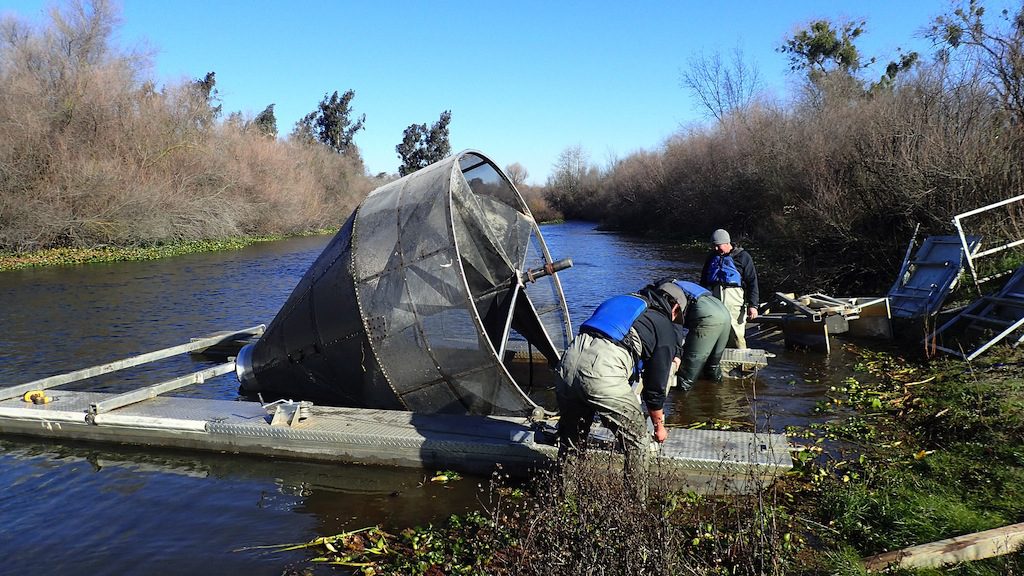Wednesday February 4, 2015

Now that we’ve recently turned the page to a new year, we also turn our attention to the beginning of out-migration monitoring season. Now that the fall-run migration of adult Chinook salmon is complete, we begin collecting data on the out-migrating juveniles as they leave their local rivers and make their way to the San Joaquin Delta. FISHBIO technicians are working tirelessly to ensure that our operations on a number of rivers in California’s Central Valley return the most accurate data available. Rotary screw traps (RSTs) are a key component in our monitoring program, and are currently in operation on these local rivers. As documented in our recent post, Hyacinth Woes: from a gift to a curse, the invasive water weed has proved to be a persistent issue at our Tuolumne River trapping location, and has required diligent monitoring by our field team to address clogging.

Relatively simple in design, rotary screw traps were originally designed by a pair of biologists from the Oregon Department of Fish and Wildlife in the late 1980s. The interior of the cone is reminiscent of a screw, hence the name, with baffles along a rod through the center of the cone that catch the river’s flow and cause rotation. The inflow created by the rotation draws fish into the cone through the large open end where they pass through the cone, and into a live box where they are held for sampling. A team of technicians checks the trap daily to process the day’s catch, and collect pertinent data (see Measuring Up). Catch totals from these traps allow us to estimate the overall population of juvenile salmon in each river.

Fisheries managers rely on these estimates to make pivotal management decisions. The length and weight measurements we collect during sampling relay important life-history information about the emigrating smolts. Relative abundance numbers can be used to determine the success of restoration projects, like Honolulu Bar on the Stanislaus River. Even the incidental catch of other fish species can provide crucial information about the composition of the river community. With all the significant data RSTs can provide, these relatively simple tools are actually quite powerful.
